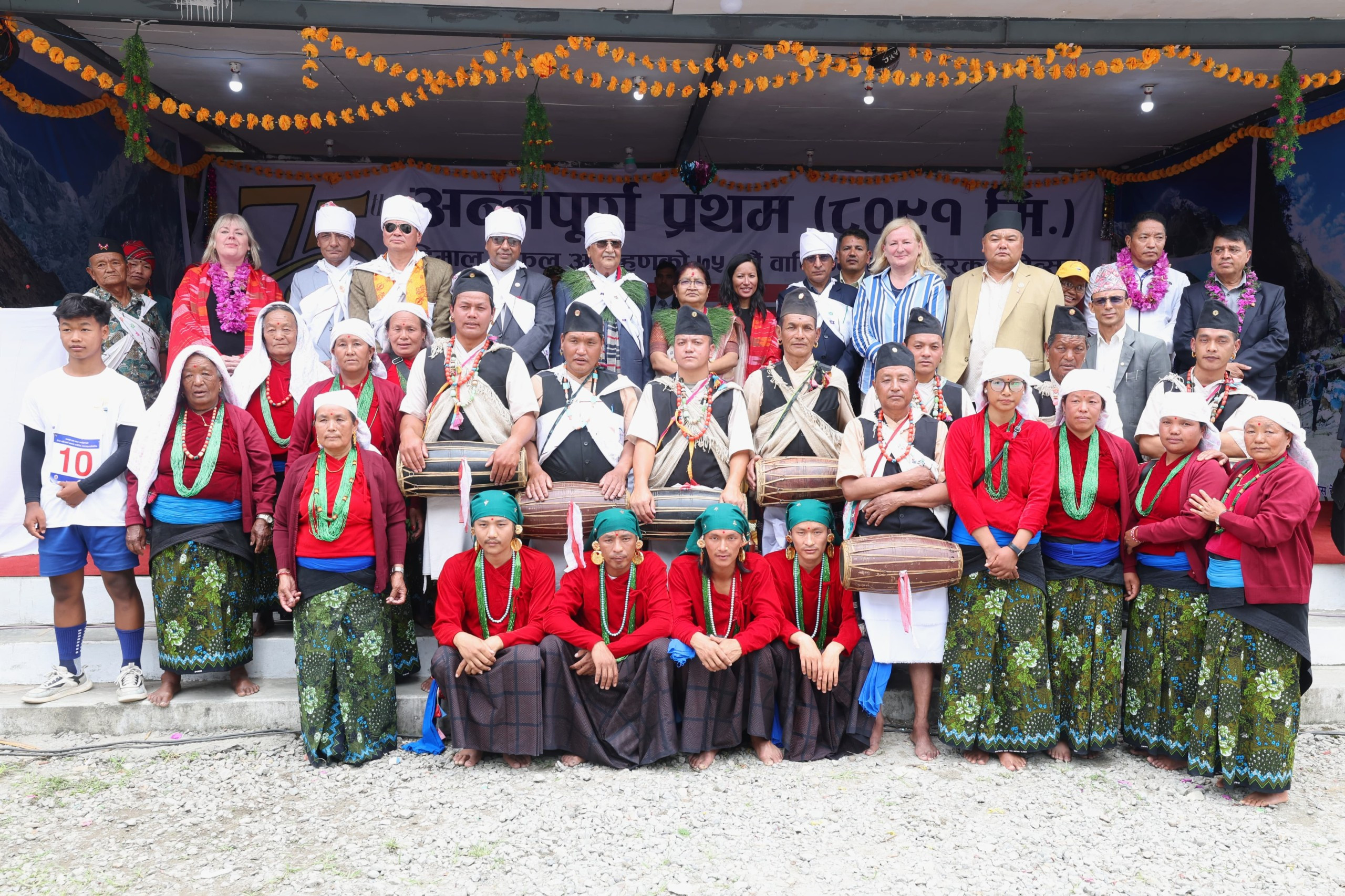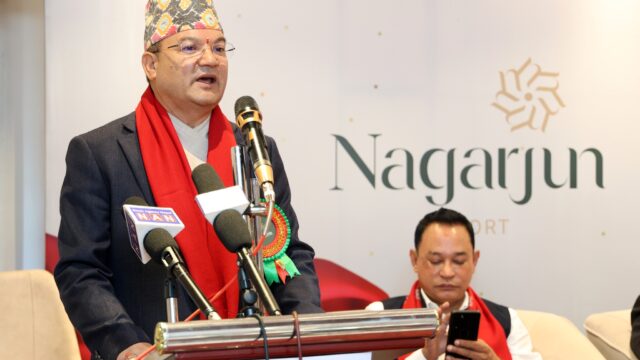Nepal recently marked the historic 75th anniversary of the first successful ascent of Mount Annapurna, the world’s first peak above 8,000 meters to be climbed. The landmark event, originally achieved by French climbers Maurice Herzog and Louis Lachenal on June 3, 1950, was celebrated with a series of vibrant programs and ceremonies involving dignitaries, mountaineers, and local communities.
The celebrations were jointly organized by the Nepal Mountaineering Association (NMA), Nepal Tourism Board (NTB), and Annapurna Rural Municipality, highlighting Nepal’s rich mountaineering heritage and the crucial role Annapurna has played in shaping the history of high-altitude climbing.
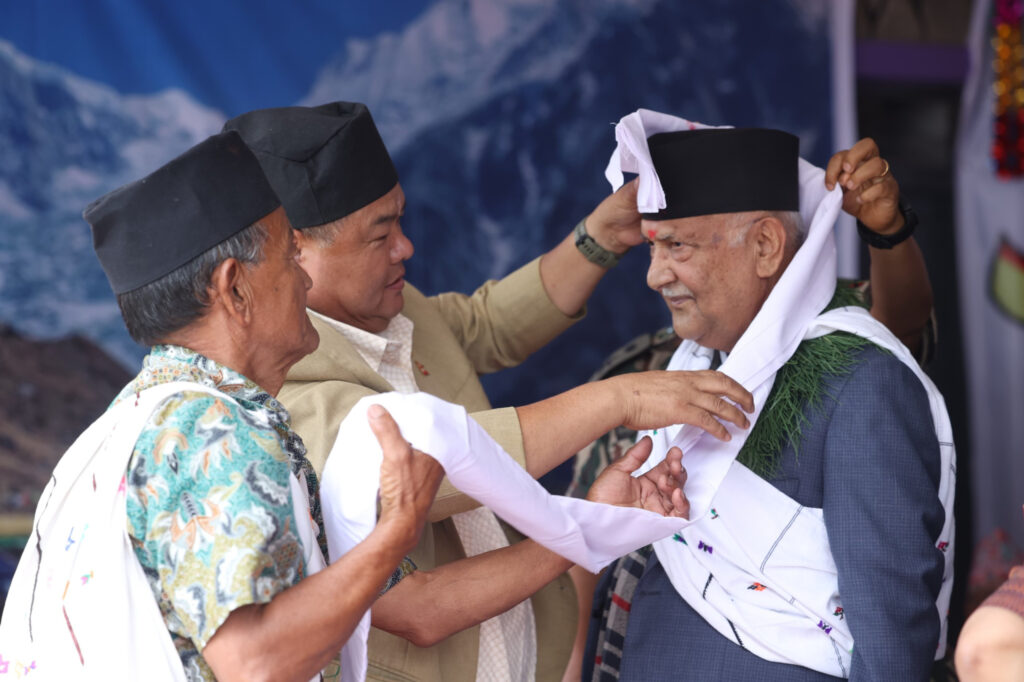
Historic First Ascent and Its Legacy
Mount Annapurna, standing at 8,091 meters, was first summited by Maurice Herzog and Louis Lachenal during a pioneering French expedition in 1950. This feat marked a monumental achievement in the history of mountaineering, as Annapurna was the first peak over 8,000 meters to be climbed successfully, opening the door to the modern era of high-altitude expeditions.
To honor this extraordinary milestone, a range of events were held across the Annapurna region and in Pokhara, the gateway to the Annapurna massif.
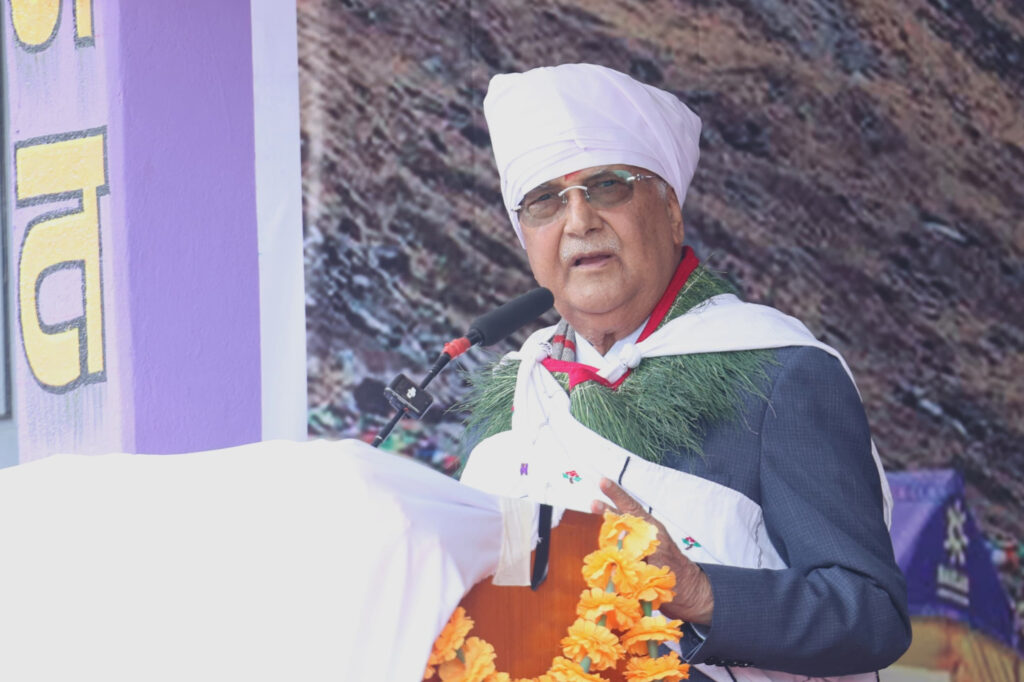
Annapurna Base Camp Marathon and Museum Inauguration
On June 3, the exact date of the historic ascent, a marathon competition was organized, starting from Annapurna Base Camp and ending at Norchyang Gaun. The challenging race attracted enthusiastic participants, and the winner was celebrated mountaineer Mr. Kushal Purja, whose victory was applauded by attendees.
Simultaneously, the organizers inaugurated an open-air museum at Annapurna Base Camp, dedicated to the climbers who have conquered the mountain. The museum features statues of the first successful climbers: Maurice Herzog, Louis Lachenal, and Sonam Walung Sherpa, the first Nepali to reach Annapurna’s summit. The museum walls proudly bear the names of all climbers who have scaled the peak, symbolizing their courage and contribution to Nepal’s mountaineering legacy.
The inauguration ceremony was graced by the Honorable State Minister for the Ministry of Energy, Water Resources, and Irrigation, Mr. Kham Bahadur Garbuja; NMA President Mr. Nima Nuru Sherpa; FNCCI President Mr. Chandra Prasad Dhakal; and the French Ambassador to Nepal, Her Excellency Virginie Corteval.
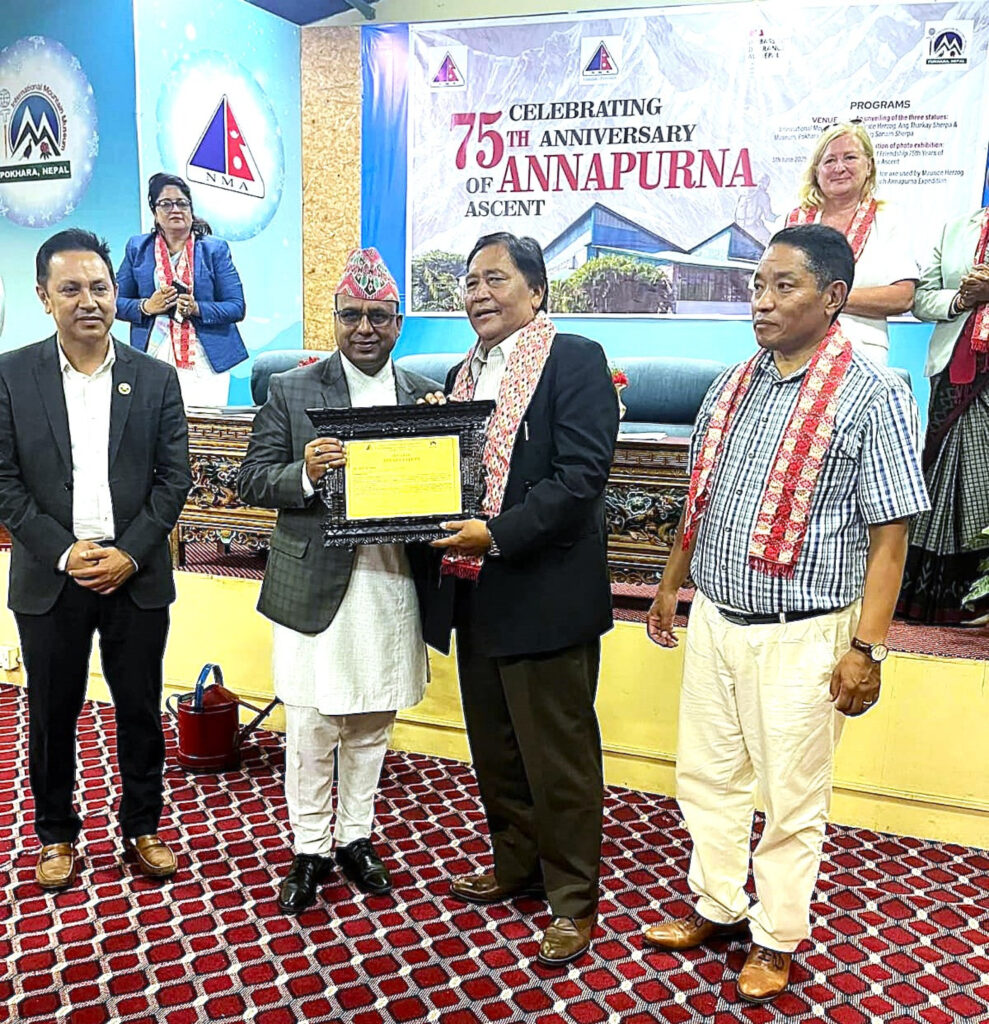
Prime Minister Oli Leads Anniversary Ceremony
Rt. Honorable Prime Minister KP Sharma Oli personally inaugurated the 75th Anniversary celebration at Norchyang Gaun, emphasizing the importance of Annapurna in Nepal’s tourism and mountaineering history. Accompanying him was Honorable Minister for Culture, Tourism, and Civil Aviation, Mr. Badri Prasad Pandey.
The Prime Minister and Minister Pandey honored Mr. Mathias Herzog, son of Maurice Herzog, who traveled from France to be part of this historic occasion. They also honored renowned climber Ms. Purnima Shrestha, who was appointed as the goodwill ambassador for the 75th anniversary by the French Embassy in Nepal. This recognition acknowledges Ms. Shrestha’s significant contributions to Nepalese mountaineering and her role in promoting mountaineering tourism.
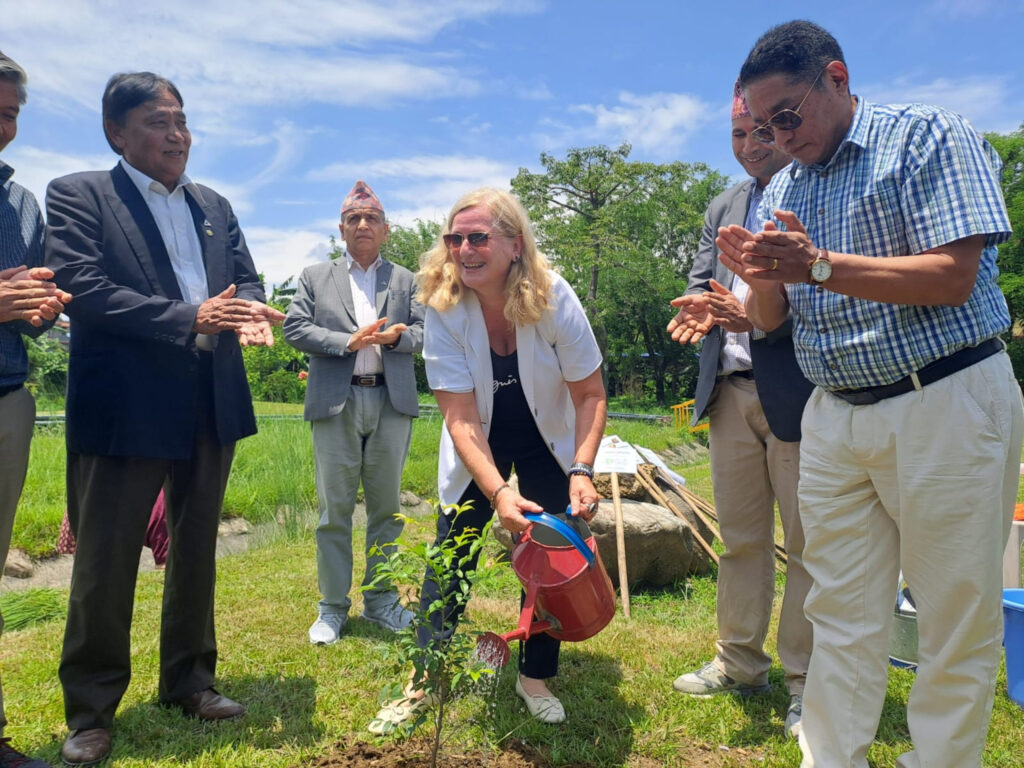
Celebrations at the International Mountain Museum
On June 5, a grand event was held at the International Mountain Museum (IMM) in Pokhara, organized by the Nepal Mountaineering Association and the French Embassy. The ceremony saw the unveiling of statues of Maurice Herzog, Ang Tharkay Sherpa (the Sardar and key expedition leader of Maurice Herzog’s team), and Walung Sonam Sherpa, the first Nepali climber to summit Annapurna.
Honorable Minister for Culture, Tourism, and Civil Aviation Badri Prasad Pandey served as the chief guest, while the French Ambassador Virginie Corteval and Gandaki Province Minister for Forest and Environment Bhesh Bahadur Poudel inaugurated a special photo exhibition titled “Summit of Friendship: 75 Years of Annapurna Ascent.” The exhibition, curated by Swaraj Man Chitrakar and supported by Alliance Française, showcased iconic moments and the enduring friendship between Nepal and France through the story of Annapurna.
A highlight of the IMM event was the symbolic handover of Maurice Herzog’s original 1950 ice axe, loaned by the Olympic Museum in Lausanne, Switzerland, and handed over by Mathias Herzog to the IMM. This precious artifact represents a tangible connection to the legendary expedition and will be a prized exhibit at the museum.
The event also featured the unveiling of the Nepali translation cover of Herzog’s acclaimed book, Annapurna: Premier 8000, by Mathias Herzog and Cyril Sonam Sherpa, grandson of Ang Tharkay Sherpa, further strengthening the bond between past and present generations of climbers.
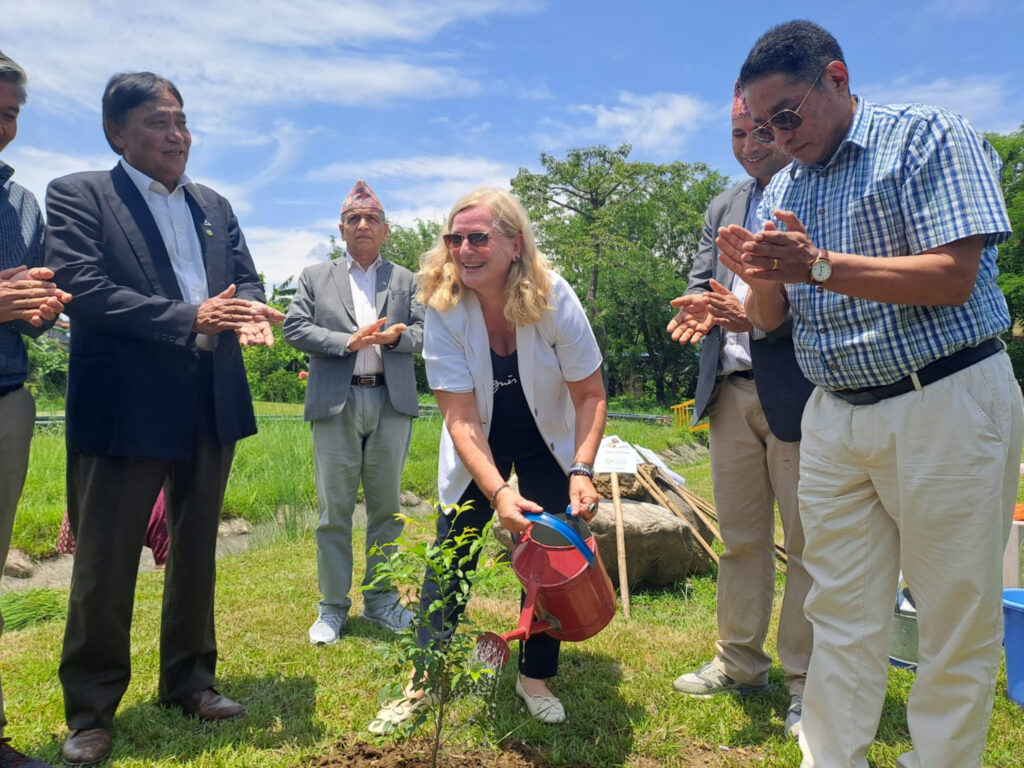
Calls for Promoting Mountaineering Heritage and Tourism
During the event, NMA President Nima Nuru Sherpa delivered a vote of thanks, urging greater support for the promotion and digitalization of the International Mountain Museum. He emphasized, “This museum has greatly contributed to Nepal’s mountain tourism by chronicling all the artifacts, equipment, and data related to mountaineering.” He further requested international cooperation to boost the museum’s profile globally.
Honorable Minister Pandey assured that the Ministry of Culture, Tourism, and Civil Aviation is committed to supporting IMM’s growth. Similarly, Gandaki Province Minister for Forest and Environment Bhesh Bahadur Poudel pledged provincial government support for constructing a botanical garden within the museum premises, aimed at enhancing visitors’ experience.
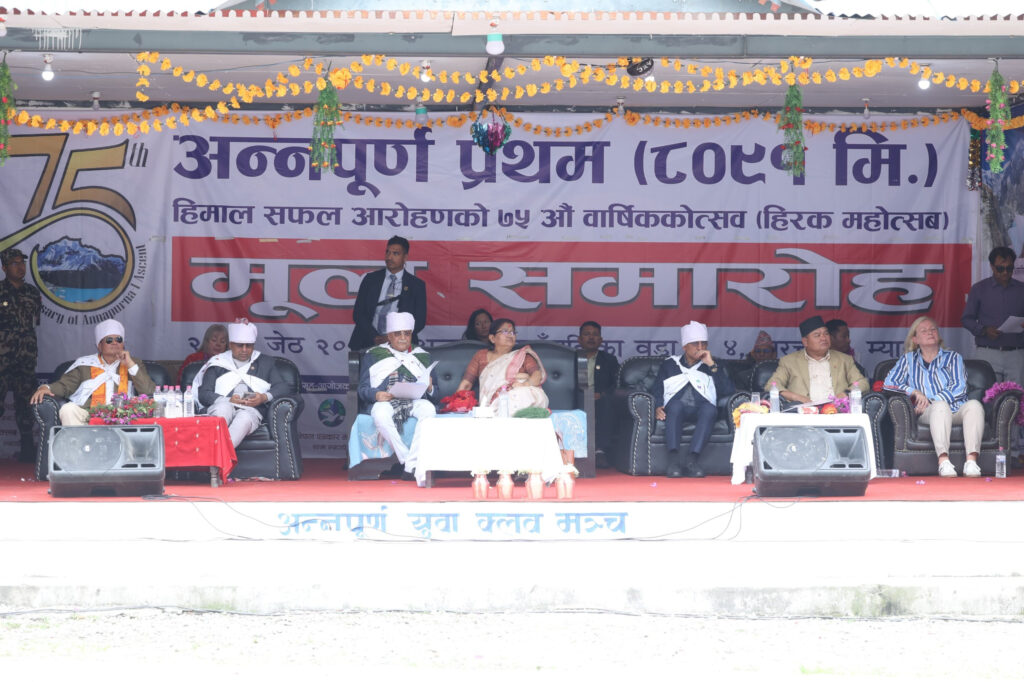
Plantation Program Marks World Environment Day
In alignment with World Environment Day, the anniversary celebrations also included a plantation program at the IMM premises. Honorable Minister Pandey, Mathias Herzog, Chairman of Chumanuwri Rural Municipality Nima Lama, and other dignitaries participated in the tree-planting ceremony, reflecting the ongoing commitment to preserving Nepal’s natural environment alongside its cultural and mountaineering heritage.
The 75th anniversary of Mount Annapurna’s first ascent not only celebrated a historic mountaineering achievement but also reinforced Nepal’s position as a premier destination for high-altitude adventure and mountain tourism. With continued government support, engagement from international partners, and the dedication of the mountaineering community, Nepal aims to preserve and promote its rich legacy for future generations. This milestone celebration serves as a reminder of the courage, friendship, and spirit of exploration that define Nepal’s mountains and the people who scale them.
